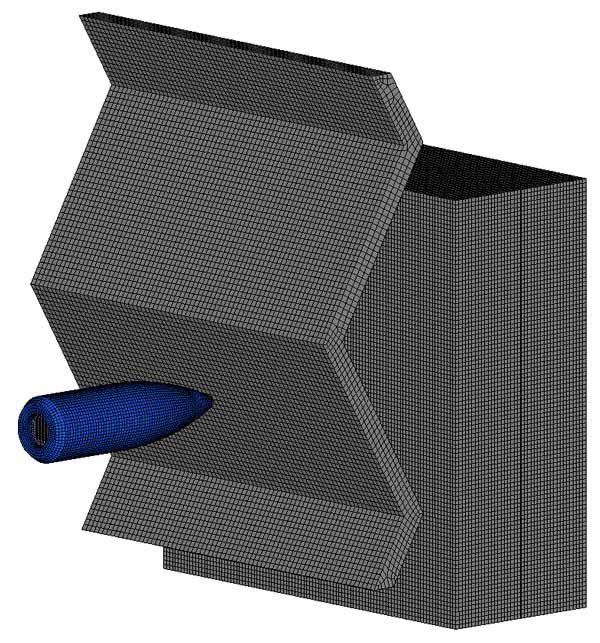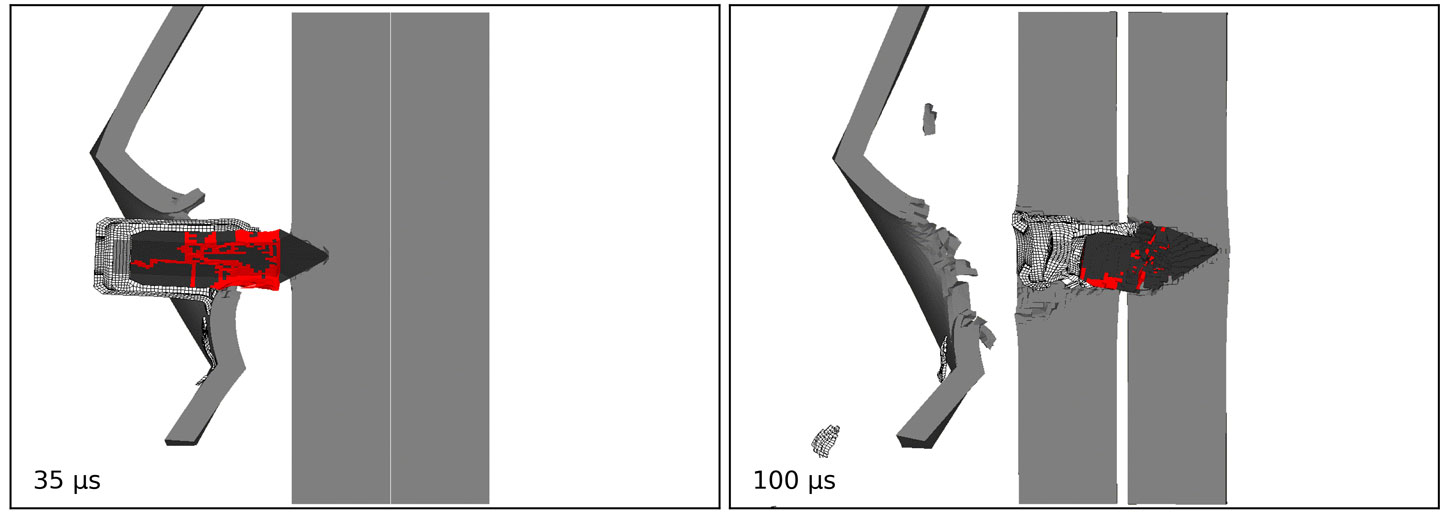Ballistic protection with additively manufactured titanium perturbation structures
Principles of lightweight protection such as the destruction of the projectile core are of fundamental interest for lightweight protection. Particularly in terms of flexibility and adaptability, protective structures can benefit if they can be manufactured using metallic 3D printing processes. Fraunhofer EMI is conducting research into suitable materials and structural configurations for this purpose. Because of their ability to adapt to geometric constraints, 3D printing processes could also be beneficial. For example, when protecting components of robotic systems used to support soldiers. The following is an example of how the simultaneous use of the effects of spacing and inclined surfaces can enhance the ballistic protection.

The reduction of projectile penetration at preferably the lowest weight is the pivotal purpose of ballistic protection. Small-caliber, armor piercing projectiles include a hard core which consists either of hardened steel or tungsten carbide. Protection against this type of projectiles can be realized in an efficient way when the hard core is fragmented severely during the interaction with the armor. Whether fragmentation of the projectile core occurs or not, depends on the mechanical properties of the armor material and the thickness and inclination angle of the target plates. Particularly the asymmetric forces exerted on the projectile during penetration of inclined targets contribute to the break-up of the core. If the second layer of the armor is separated from the first one by a spacing, the projectile fragments can separate from one another which will lead to a reduction of penetration and increase of protection.
The investigations at EMI have demonstrated, that tungsten carbide projectile cores are getting strongly fragmented during the interaction with thin plates of Ti6Al4V at an inclination of 30 degrees. However, the use of inclined plates of large dimensions is always connected with a significant increase of armor volume. If the flat plate is replaced by a structured plate with a corrugated or saw tooth profile, the projectile will hit inclined surfaces although the structure is oriented parallelly to the subsequent armor. Titanium perturbation structures have been manufactured additively using the laser powder bed fusion process. Ballistic tests and analyses by means of numerical simulations have proven an enhanced protection of configurations with titanium perturbation structures.

